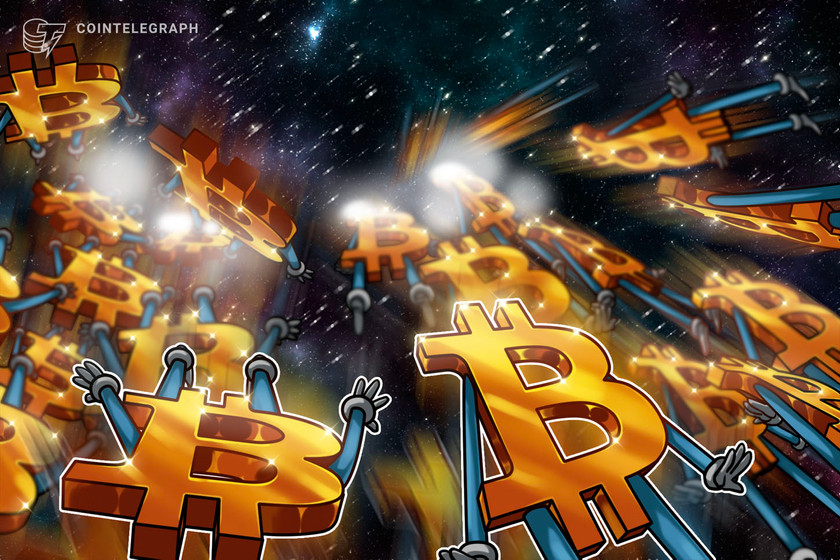
A key Bitcoin price metric hit a new all-time high, but is this a bullish or bearish development?
Sept. 12 will leave a mark that will probably stick for quite a while. Traders at the Bitfinex exchange vastly reduced their leveraged bearish Bitcoin (BTC) bets and the absence of demand for shorts could have been caused by the expectation of cool inflation data.
Bears may have lacked confidence, but August's U.S. Consumer Price Index (CPI) came in higher than market expectations and they appear to be on the right side. The inflation index, which tracks a broad basket of goods and services, increased 8.3% over the previous year. More importantly, the energy prices component fell 5% in the same period but it was more than offset by increases in food and shelter costs.
Soon after the worse-than-expected macroeconomic data was released, U.S. equity indices took a downturn, with the tech-heavy Nasdaq Composite Index futures sliding 3.6% in 30 minutes. Cryptocurrencies accompanied the worsening mood, and Bitcoin price dropped 5.7% in the same period, erasing gains from the previous 3 days.
Pinpointing the market downturn to a single inflationary metric would be naive. A Bank of America survey with global fund managers had 62% of respondents saying that a recession is likely, which is the highest estimate since May 2020. The research paper collected data on the week of Sept. 8 and was led by strategist Michael Hartnett.
Interestingly, as all of this takes place, Bitcoin margin traders have never been so bullish, according to one metric.
Margin traders flew away from bearish positions
Margin trading allows investors to leverage their positions by borrowing stablecoins and using the proceeds to buy more cryptocurrency. On the other hand, when those traders borrow Bitcoin, they use the coins as collateral for shorts, which means they are betting on a price decrease.
That is why some analysts monitor the total lending amounts of Bitcoin and stablecoins to understand whether investors are leaning bullish or bearish. Interestingly, Bitfinex margin traders entered their highest leverage long/short ratio on Sept. 12.

Bitfinex margin traders are known for creating position contracts of 20,000 BTC or higher in a very short time, indicating the participation of whales and large arbitrage desks.
As the above chart indicates, on Sept. 12, the number of BTC/USD long margin contracts outpaced shorts by 86 times, at 104,000 BTC. For reference, the last time this indicator flipped above 75, and favored longs, was on Nov. 9, 2021. Unfortunately, for bulls, the result benefited bears as Bitcoin nosedived 18% over the next 10 days.
Derivatives traders were overly excited in November 2021
To understand how bullish or bearish professional traders are positioned, one should analyze the futures basis rate. That indicator is also known as the futures premium, and it measures the difference between futures contracts and the current spot market at regular exchanges.

The 3-month futures typically trade with a 5% to 10% annualized premium, which is deemed an opportunity cost for arbitrage trading. Notice how Bitcoin investors were paying excessive premiums for longs (buys) during the rally in November 2021, the complete opposite of the current situation.
On Sept. 12, the Bitcoin futures contracts were trading at a 1.2% premium versus regular spot markets. Such a sub-2% level has been the norm since Aug. 15, leaving no doubts regarding traders' lack of leverage buying activity.
Related: This week’s Ethereum Merge could be the most significant shift in crypto’s history
Possible causes of the margin lending ratio spike
Something must have caused short-margin traders at Bitfinex to reduce their positions, especially considering that the longs (bulls) remained flat across the 7 days leading to Sept. 12. The first probable cause is liquidations, meaning the sellers had insufficient margin as Bitcoin gained 19% between Sept. 6 and 12.
Other catalysts might have led to an unusual imbalance between longs and shorts. For instance, investors could have shifted the collateral from Bitcoin margin trades to Ethereum, looking for some leverage as the Merge approaches.
Lastly, bears could have decided to momentarily close their margin positions due to the volatility surrounding the U.S. inflation data. Regardless of the rationale behind the move, there is no reason to believe that the market suddenly became extremely optimistic as the futures markets' premium paints a very different scenario from November 2021.
Bears still have a glass-half-full reading as Bitfinex margin traders have room to add leverage short (sell) positions. Meanwhile, bulls can celebrate the apparent lack of interest in betting on prices below $20,000 from those whales.
The views and opinions expressed here are solely those of the author and do not necessarily reflect the views of Cointelegraph. Every investment and trading move involves risk. You should conduct your own research when making a decision.
















